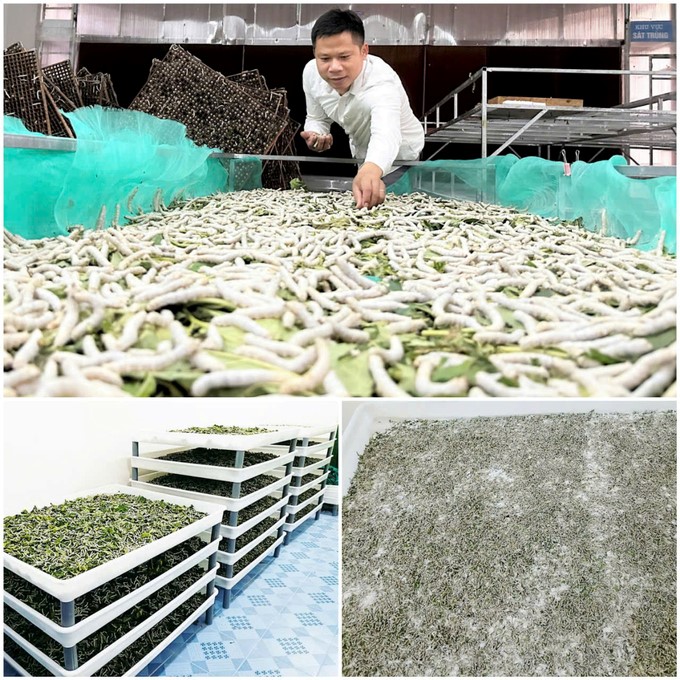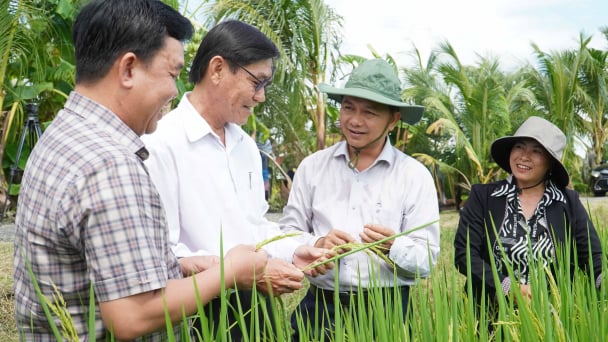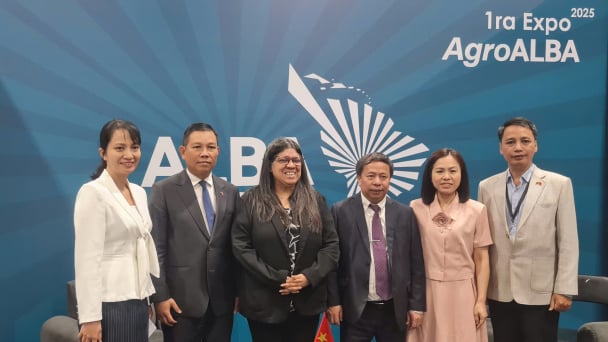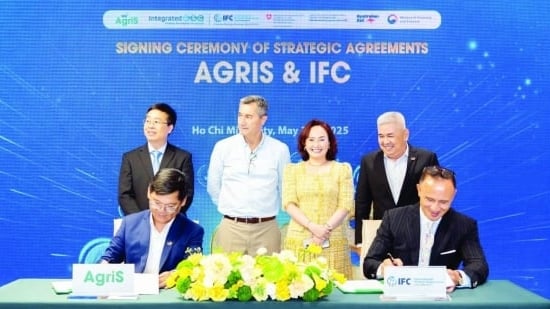June 16, 2025 | 06:30 GMT +7
June 16, 2025 | 06:30 GMT +7
Hotline: 0913.378.918
June 16, 2025 | 06:30 GMT +7
Hotline: 0913.378.918

Cuong Nga Cooperative has mastered the technique of producing silkworm breeds and raising adult silkworms. Photo: Thanh Nga.
When mentioning the mountainous district of Huong Son (Ha Tinh), people immediately think of sika deer farming, with around 18 tons/year of antlers supplied to the market, bringing to people hundreds of billions of dong in revenue each year.
In terms of economic efficiency, there is currently no farming object that can surpass the sika deer. However, to avoid overheating development that causes oversupply, the local government encourages diversification of livestock, especially new species that are easy to replicate and make the most of the land fund and unskilled labor in the area.
From that viewpoint, in 2022, with the support and facilitation of the leaders of Huong Son district and Quang Diem commune, Cuong Nga Cooperative invested in building a pilot model of growing mulberry trees and raising silkworms on an area of 3 hectares.

Mr. Nguyen Van Viet, Director of the Department of Agriculture and Rural Development (white shirt), visited the Cooperative's model of growing mulberry trees and raising silkworms. Photo: Thanh Nga.
According to Mr. Nguyen Van Cuong, Director of the Cooperative, at first, he and his colleagues took advantage of the Cooperative's factory, installed air conditioners and racks, and raised 2 boxes of silkworms per month. However, due to lack of experience in the start-up phase, the yield of silkworm cocoons was not as expected.
"Better luck next time." Mr. Cuong went from the South to the North to learn from experience and promote the search for output markets. With the support on technical processes from the Vietnam Sericulture Research Centre, the Cooperative is now confident in mastering the process of raising baby and adult silkworms, with the main silkworm varieties of Chinese Biparental and VH2020.
"Raising silkworm breeds is difficult because they require standards on temperature, humidity, and a sterile environment. However, raising adult silkworms only requires a grasp of feeding and cleaning techniques to be successful. Currently, the Cooperative is planning to raise baby silkworms (aged 1–3) before transferring breeds and techniques to people raising adult silkworms (aged 4–5), then link with businesses to consume silkworm cocoons for people," shared Mr. Cuong.

According to calculations, 1 hectare of growing mulberry trees and raising silkworms brings a revenue of more than VND 350 million. Photo: Thanh Nga.
For raw material areas, mulberry is a heat-resistant plant, has the ability to adapt to many soil types, and is less infected with pests. Furthermore, the hybrid mulberry varieties that the Cooperative has experimentally planted, such as VH15, GQ2, and S7CB, are not only productive but also have large, thick leaves, so they save on harvesting costs and labor compared to other mulberry varieties.
"Currently, the Cooperative's mulberry production area is only enough to meet the capacity of raising 4 boxes of silkworms per month, bringing a revenue of over VND 30 million. We hope that the local government will coordinate to evaluate the model's effectiveness and, at the same time, create conditions for leasing land to expand raw material areas in order to 'revitalize' the mulberry growing and silkworm raising profession, thereby contributing to increasing income for people in the entire district," Mr. Nguyen Van Cuong emphasized.

Silkworm cocoons are productive and of very good quality. Photo: Thanh Nga.
Analyzing further the potential for developing the mulberry growing and silkworm raising profession, the Director of the Cooperative calculated that previously, people planted 1 corn crop on the riverside alluvial land fund, with revenue reaching about VND 40–50 million/ha. Or low mountainous areas that used to grow acacia took 7 years to harvest with a modest revenue of VND 70–80 million/ha. Meanwhile, in these locations, growing mulberry and raising silkworms can earn more than VND 300 million/ha.
According to Mr. Nguyen Kieu Hung, Vice Chairman of the Huong Son District People's Committee, after sending district officials to accompany Cuong Nga Cooperative to visit and learn from experience in the Southern provinces, we directed this Cooperative to coordinate with experts of the Vietnam Sericulture Research Centre to build a pilot farming model. Very happily, after nearly 2 years of implementation, the Cooperative has mastered the technique of raising and incubating breeds. All silkworm cocoons harvested are of good quality; supply is not enough to meet demand.
"The model of growing mulberry trees and raising silkworms in Quang Diem commune is initially very effective. In the near future, we will orient Cuong Nga Cooperative to link in a chain with households to make the most of the land fund and idle labor, mainly women, to replicate the model and increase income for people. The product output that was the most worrying thing is now stable, so the opportunity for development is large," Mr. Nguyen Kieu Hung assessed.

The land fund for developing the mulberry growing and silkworm raising profession in Huong Son is very abundant. Photo: Thanh Nga.
According to Mr. Hung, farmer households' garden land fund of 500 m2 or more in Huong Son area that can mobilize farmers to grow mulberry trees and raise silkworms currently reaches about 2,000 hectares. In addition, about 1,000 hectares of riverside alluvial land that are not planted with corn or grass to raise cows and deer can also be converted to growing mulberry trees and raising silkworms. Not to mention the low hill land used to grow acacia that can be converted to this object if irrigation water is guaranteed.
Localities with potential for developing the mulberry growing and silkworm farming profession are concentrated in communes: Son Trung, Son Giang, Son Ninh, Son Chau, Tan My Ha, An Hoa Thinh, Son Bang, Son Tay, Son Linh, etc.
Translated by Thu Huyen
/2025/06/12/3721-2-202745_83.jpg)
(VAN) TH made an impression at Seoul Food 2025 with its line of natural beverages, paving the way for Vietnamese food products to enter the South Korean market.

(VAN) Soc Trang's success in rice exports stems from a strategy of developing fragrant and specialty rice cultivation areas and standardizing production toward low-emission practices.
/2025/06/11/1311-5-120811_839.jpg)
(VAN) The pig farming industry is facing the challenge of comprehensive restructuring to meet requirements for quality, safety, traceability, and market expansion both domestically and for export.

(VAN) Vietnam considers participating in ALGROALBA in order to expand agricultural production, coordinate the assessment and effective exploitation potential land.
/2025/06/05/5314-1-184727_407.jpg)
(VAN) From seemingly worthless fish scales and skin, enzymes and lactic ferments can transform by-products into peptides, opening a sustainable, effective business direction and elevating Vietnamese seafood.

(VAN) TTC AgriS and IFC signed a strategic partnership to develop a sustainable agricultural value chain, aiming to achieve the Net Zero target by 2035.

(VAN) Seafood by-products are opening a new path, combining green growth and technological innovation to enhance the industry's value.